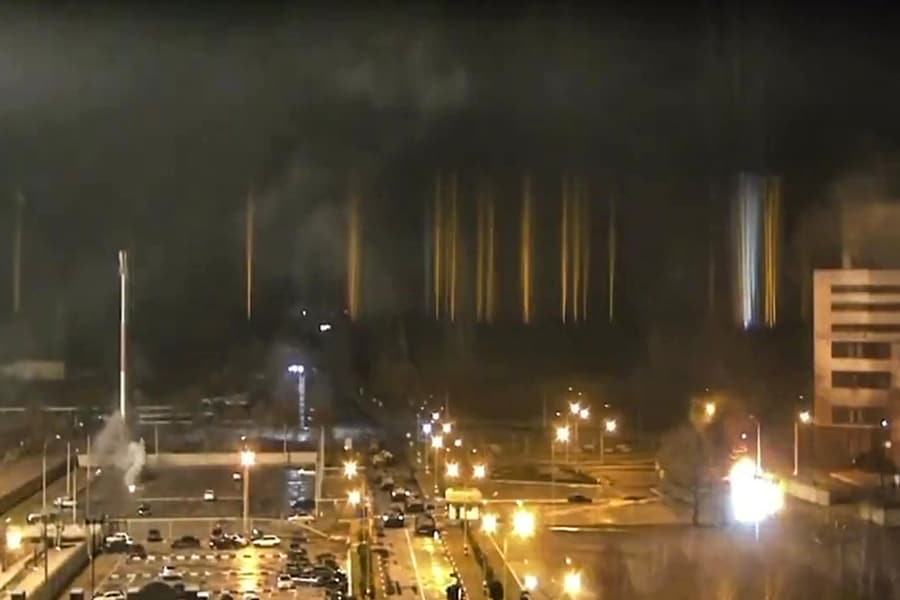
Fire breaks out at Ukraine's nuclear complex as Russian forces move through
Security camera footage showed a building ablaze inside the Zaporizhzhia nuclear complex near a line of military vehicles; President Zelenskyy says an explosion there would have been "the end of everybody, the end of Europe"
 ZAPORIZHZHIA, UKRAINE - MARCH 4: A screen grab captured from a video shows a view of Zaporizhzhia nuclear power plant during a fire following clashes around the site in Zaporizhzhia, Ukraine on March 4, 2022. (Photo by Zaporizhzhia Nuclear Power Plant/Anadolu Agency via Getty Images)
ZAPORIZHZHIA, UKRAINE - MARCH 4: A screen grab captured from a video shows a view of Zaporizhzhia nuclear power plant during a fire following clashes around the site in Zaporizhzhia, Ukraine on March 4, 2022. (Photo by Zaporizhzhia Nuclear Power Plant/Anadolu Agency via Getty Images)
A fire broke out early Friday at a complex in southern Ukraine housing Europe’s largest nuclear power plant after Russian troops fired on the area, the Ukrainian government said.
Security camera footage verified by The New York Times showed a building ablaze inside the Zaporizhzhia nuclear complex near a line of military vehicles. The videos appeared to show people in the vehicles firing at buildings in the power plant. Ukraine’s state emergency service later said the blaze went out after 6 a.m.
President Volodymyr Zelenskyy of Ukraine accused the Russian military of deliberately attacking the complex and said an explosion there would have been “the end for everybody, the end of Europe.”
“Only immediate actions by Europe could stop the Russian army,” he added.
The fire had not affected essential equipment at the plant, the International Atomic Energy Agency said on Twitter, citing its communication with the Ukrainian government. It said that personnel at the plant were “taking mitigatory actions.”
©2019 New York Times News Service







